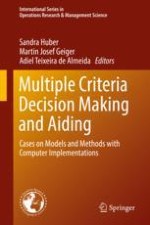2019 | OriginalPaper | Buchkapitel
Robust Ranking of Universities Evaluated by Hierarchical and Interacting Criteria
verfasst von : Salvatore Corrente, Salvatore Greco, Roman Słowiński
Erschienen in: Multiple Criteria Decision Making and Aiding
Aktivieren Sie unsere intelligente Suche, um passende Fachinhalte oder Patente zu finden.
Wählen Sie Textabschnitte aus um mit Künstlicher Intelligenz passenden Patente zu finden. powered by
Markieren Sie Textabschnitte, um KI-gestützt weitere passende Inhalte zu finden. powered by
